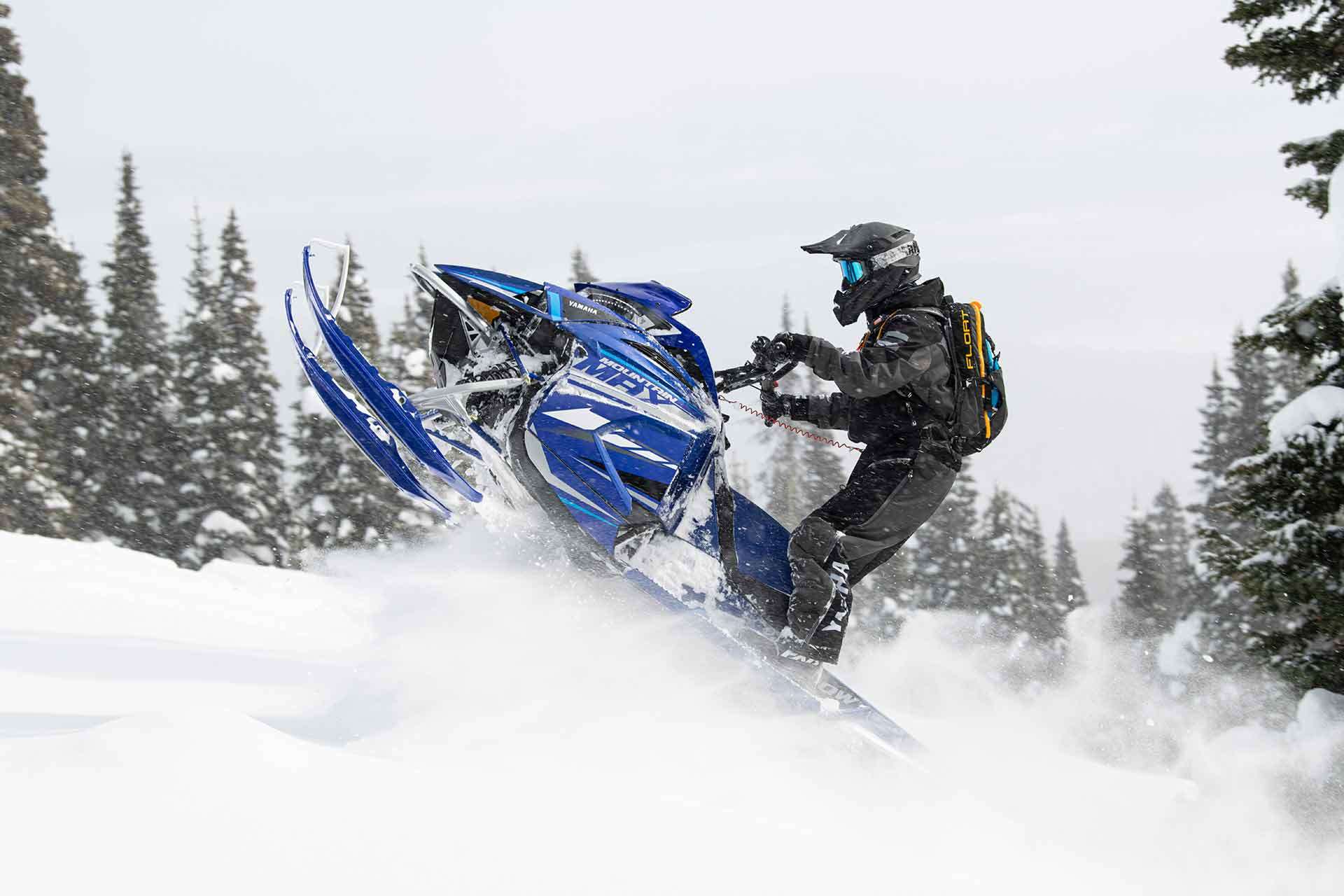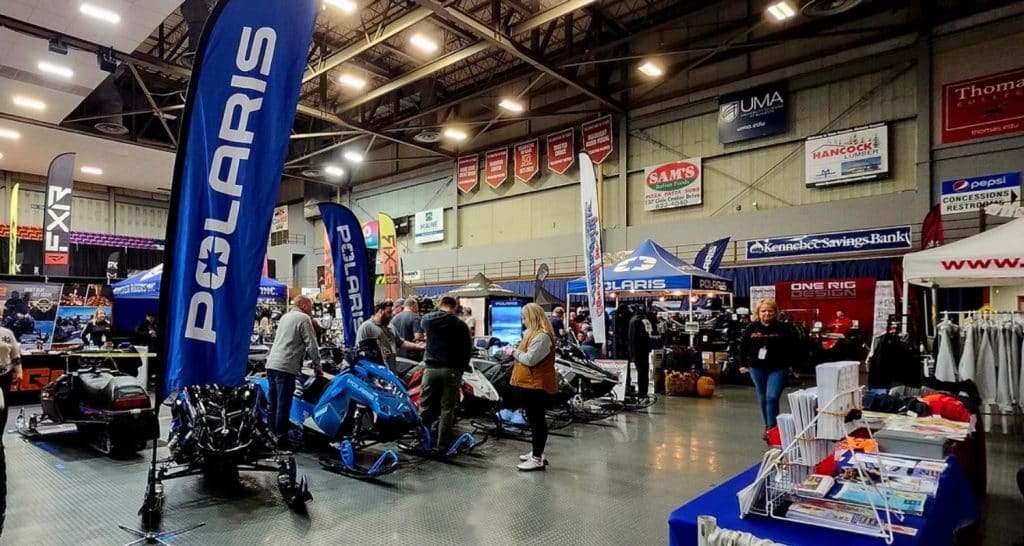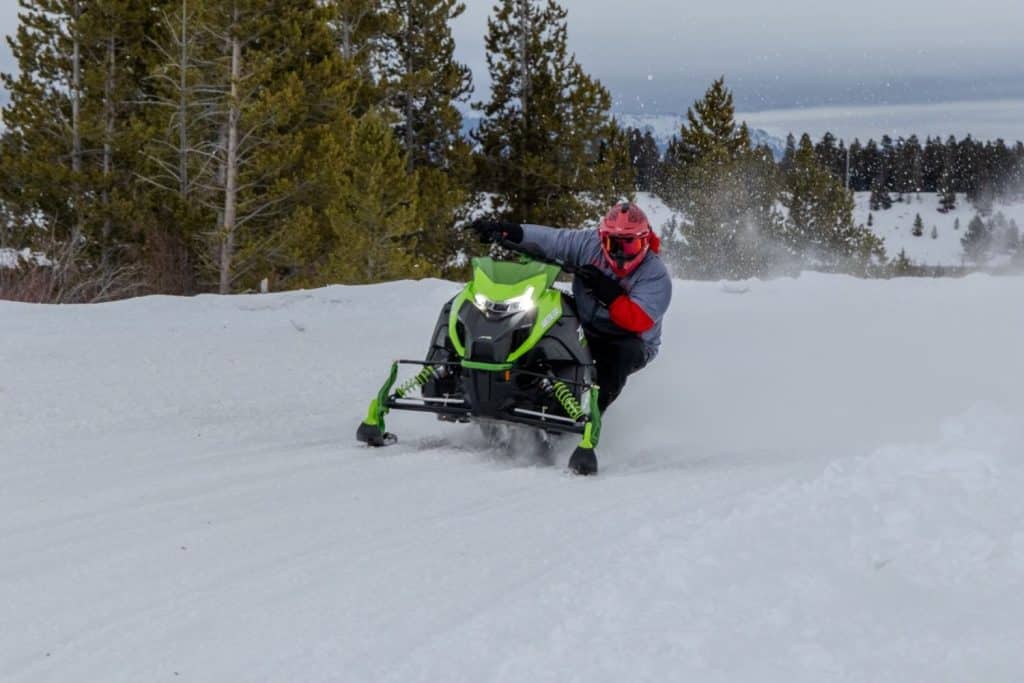Finally! Yamaha is back with a vengeance in the 2-stroke segment and especially in the very effervescent mountain snowmobile niche. To ensure success, Yamaha is also bringing back a legendary name… Mountain Max, which has been in the dustbin since the early 2000s. The icing on the cake: the Yamaha Mountain Max gets a nice color for the occasion with a bright blue. This is a very tasteful way to celebrate Yamaha’s return to the battle for the highest peaks.
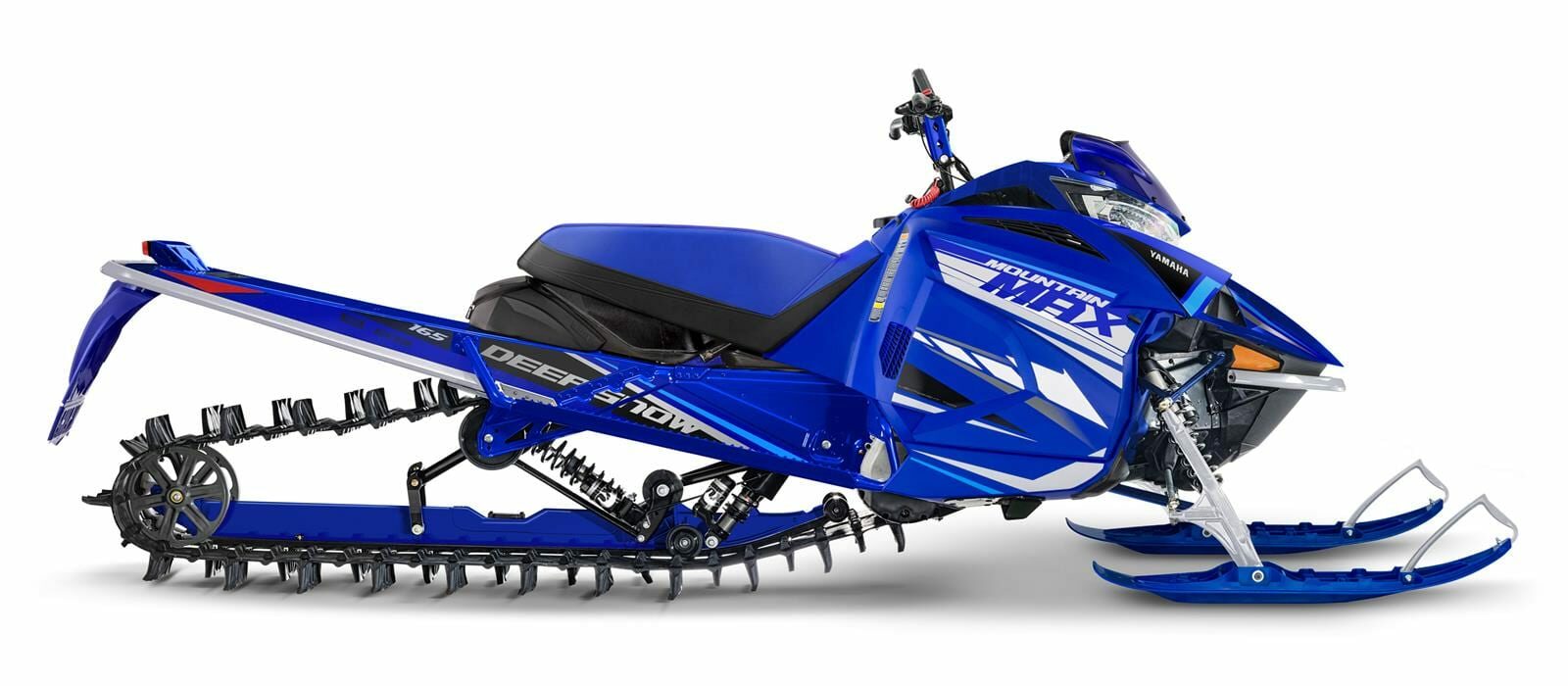
At first glance, one quickly notices the association of the Japanese manufacturer with its long-time partner: Arctic Cat. And yes, the Mountain Max is a sort of disguised “cat” that does not hide its associations with the center-beam rear suspension. However, it’s not 100% the same as an Arctic Cat, since Yamaha still wanted to put its personal touch on it. The blue color and distinctive body panels are the result.
Yamaha also made mechanical modifications such as suspension calibrations, its own mountain skis and the fuel/oil injection mapping is developed by the manufacturer. This last modification will certainly play a favorable role on the reliability of the engine with an oil supply adjusted according to the guidelines of the Japanese manufacturer.
The engine is the C-TEC2, a 794cc 2-stroke twin-cylinder that delivers a whopping 165 horsepower. This is not a newcomer to the market and this “mill” has proven itself for several seasons now. Although it is not the most advanced 2-stroke engine available today, it has proven to be reliable, efficient and competitive with other brands in this class.
Many people will ask why Yamaha didn’t develop its own 2-stroke mechanics instead of partnering with Arctic Cat? The answer is really simple: it’s the economic point of view and the delays. In fact, the development of a mechanic is very costly and involves many delays for design and testing. Therefore, several years are required.
Moreover, the return on investment is directly related to the number of snowmobiles sold. When you consider that the snowmobile market has just under 100,000 units sold annually, and that the two big manufacturers have the majority of the market share, the use of Arctic Cat’s powerplants for Yamaha was practically inevitable. And the same goes for many other components that the two manufacturers share.
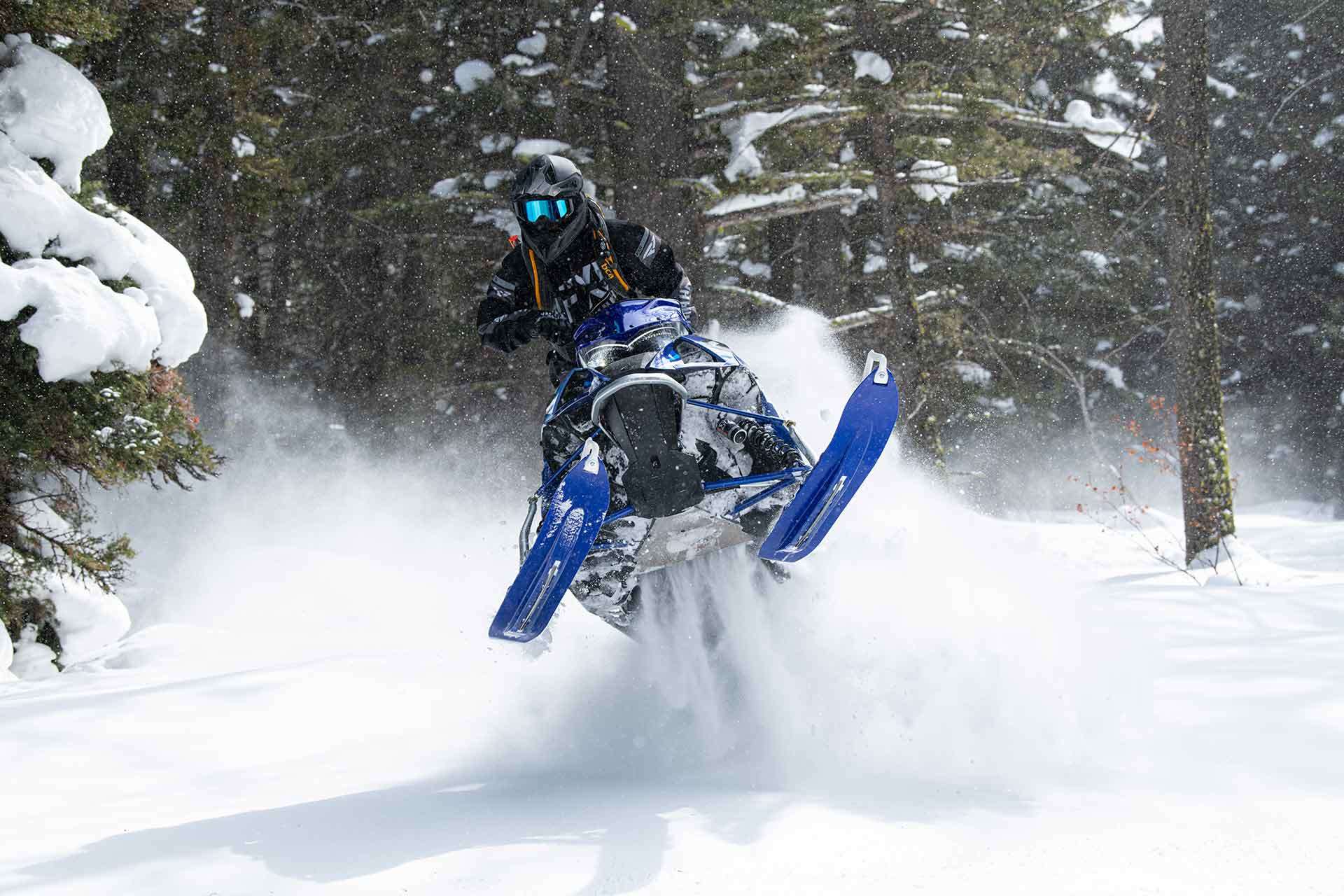
The Yamaha Mountain Max is offered in two versions and that comes down to two track lengths. The CAMSO PowerClaw track is specially developed for the innovative monorail with huge 3″ studs for the 165″ and 2.6″ for the 154″ version. And to transmit the 165 horsepower to the track, Yamaha opted for the excellent TEAM pulley kit.
The Yamaha Mountain Max is offered in two versions and that comes down to two track lengths. The CAMSO PowerClaw track is specially developed for the innovative monorail with huge 3″ studs for the 165″ and 2.6″ for the 154″ version. And to transmit the 165 horsepower to the track, Yamaha opted for the excellent TEAM pulley kit.
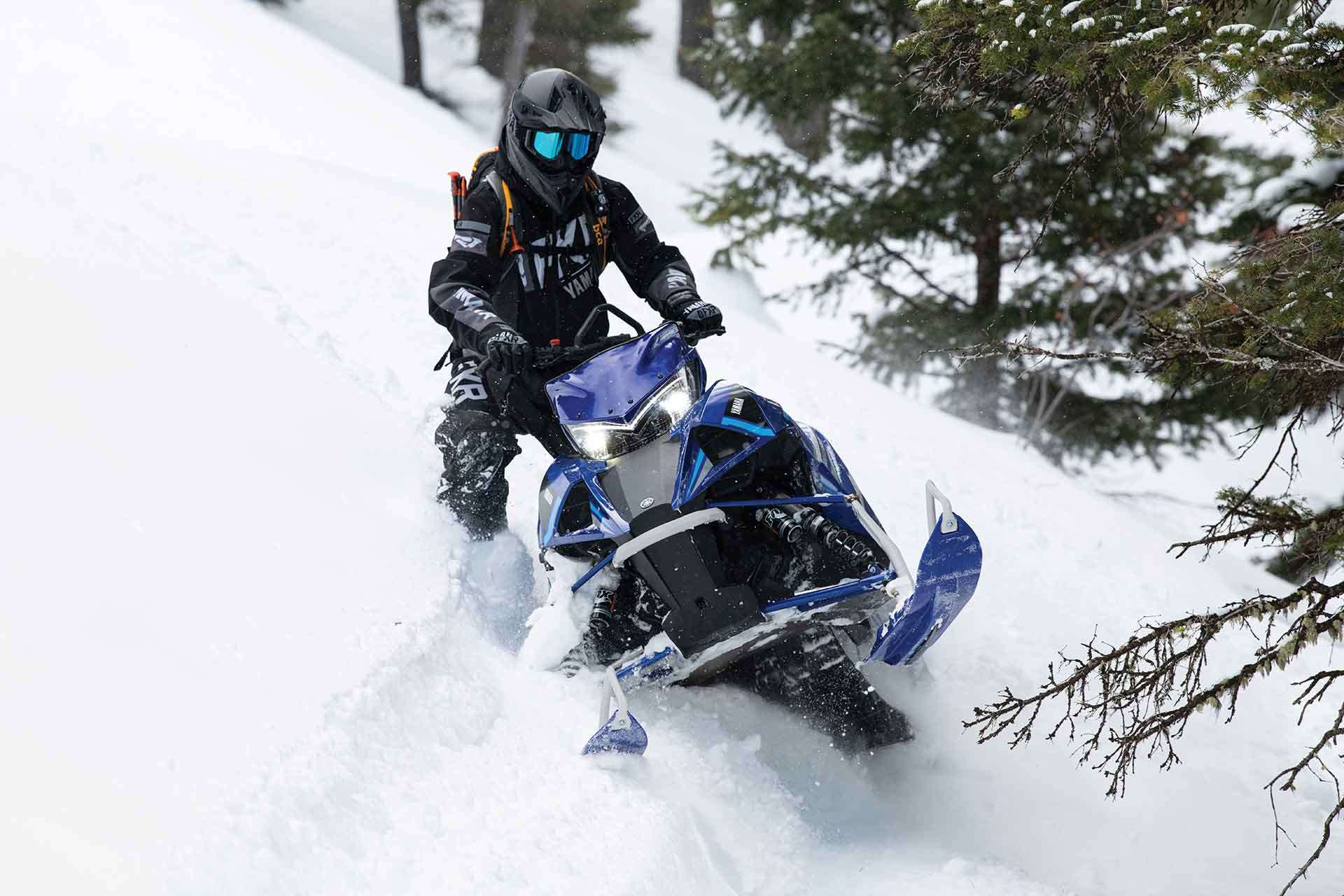
Behavior in the mountains
When you embark on this type of snowmobile with a central beam, it requires a certain period of adaptation since it is very easy (even too easy) to make the snowmobile oscillate from left to right. Thus, one finds oneself in an unexpected imbalance and one often ends up on the side when starting out. Also, it often feels like the snowmobile is slipping between your legs.
On the other hand, once you find your ease, the driving feeling is really great and allows you to limit the efforts during the day. This is interesting since a day in the mountains is quite demanding physically. With the monorail design, you get a snowmobile that is very easy to lean over and hold in the sidehill. The monorail allows for increased flexibility of the track to play in very deep snow and do “donuts” without too much effort.
Although this design is an advantage in deep snow, it becomes a bit of a handicap in situations where the snow is hard packed and denser, which is often observed during a winter warm-up or at the end of the season. The monorail then inflicts an imbalance on the snowmobile, which is a notable disadvantage compared to a 2-rail system.
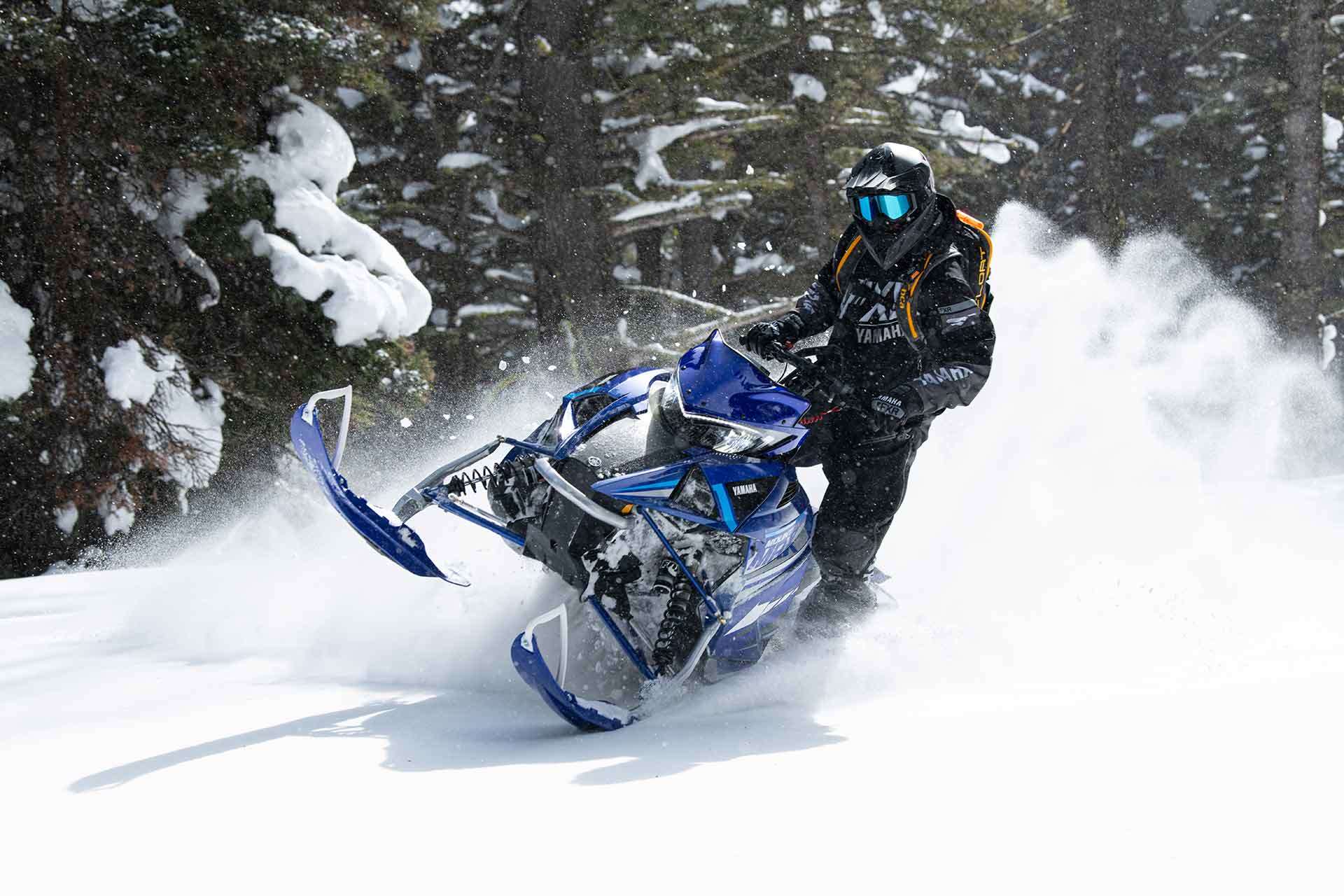
Conclusion – 2021 Yamaha Mountain Max 2021 Test
We are happy to see a marked return of the Japanese manufacturer in mountain snowmobiles and even more so with 2-stroke engines. This is the most competitive market segment right now and we see innovations on a regular basis. It is interesting to see the manufacturers fighting it out to see who will be the “king of the mountain”. One thing is certain, with the Mountain Max, Yamaha has a strong contender to lead the battle.

